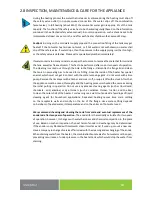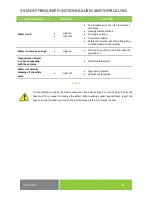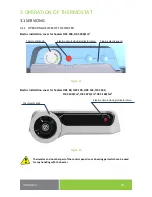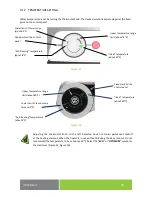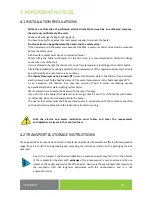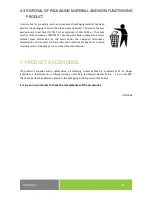
-
18
-
2.8
INSPECTION, MAINTENANCE & CARE FOR THE A
PPLIANCE
During the heating process the water that increases its volume during the heating must drip off
the safety valve outlet (in non
-
pressurised
connection this water drips off the combination
faucet valve). In full heating (about 65oC) the volumetric water gain is approx. 3% of the tank
capacity. The function of the safety valve has to be checked regularly (based on the information
contained in the attached safety valve manual). In common operation, such a check needs to be
implemented at least once a month,
and after each heater shutdown that exceeds 5 days.
Caution!
In doing so, the cold water supply pipe and the connection fitting of the tank may get
heated! If the hot water heater does not work, or if hot water is not withdrawn, no water shall
drip off the safety valve. If water drips, then the pressure in the supply piping is either too
high,
or the safety valve is defective. Please call a specialised plumber immediately!
If water contains too many minerals, an expert has to come to remove the scale that forms inside
the tank, as well as free sediments. This has to be performed after one or two years of operation.
The cleaning is carried out through the hole in the flange
-
dismantle the flange lid and clean
the tank. A new sealing has to be used for re
-
fitting. Since the inside of the heater has special
enamel, which must not get in contact with the scale removing agent
-
do not work with a lime
pump. Remove the lime layer with a timber and suck it off, or wipe it off with a clout. After that,
the appliance must be rinsed thoroughly and the heating process is checked the same as during
the initial putting in operation. Do not use any abrasive cleaning agents (such as liquid sand,
chemicals
-
acid, alkaline) or dye thinners (such as cellulose thinner, trichlor, and the like)
to clean the outer shell of the heater. For cleaning use a wet clout and add a few drops of liquid
cleaning agent for household applications. Repeated heating causes lime scale settling
on the receptacle walls and mostly on the lid of the flange. Lime scale settling depends
on hardness of heated water, its temperature and on the volume of hot water used.
We recommend checking and cleaning the tank from scale and eventual replacement of the
anode rod after two years of operation.
The anode life is theoretically calculated for two years
of operation; however, it changes with water hardness and chemical composition in the place
of use. Based on such an inspection, the next term of anode rod exchange may be determined.
If the anode is only blocked with sediments clean its surface and, if used up, mount a new one.
Have a company in charge of service affairs deal with the cleaning and exchanging of the anode.
When draining water from the heater, the combination faucet valve for hot water must be open,
preventing occurrence of under
-
pressure in the heater
tank which would stop the water from
draining.















